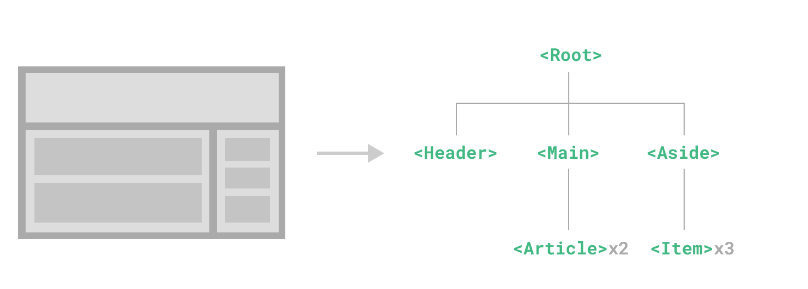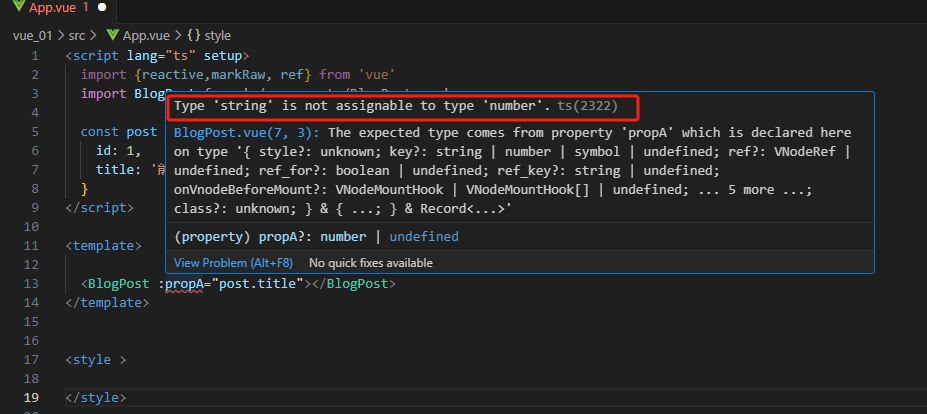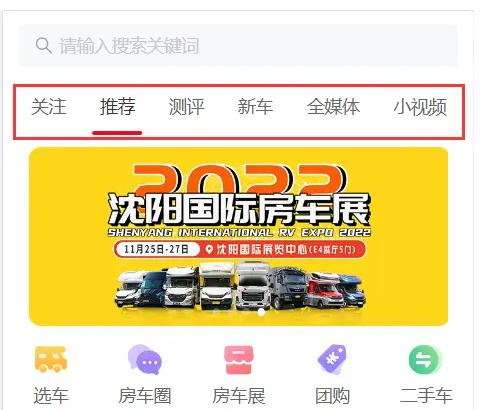============各位看官,点波关注和赞吧===========
组件允许我们将 UI 划分为独立的、可重用的部分,并且可以对每个部分进行单独的思考。在实际应用中,组件常常被组织成层层嵌套的树状结构:

这和我们嵌套 HTML 元素的方式类似,Vue 实现了自己的组件模型,使我们可以在每个组件内封装自定义内容与逻辑。Vue 同样也能很好地配合原生 Web Component(网络组件)。
🌲 定义一个组件
当使用构建步骤时,我们一般会将 Vue 组件定义在一个单独的 .vue 文件中,这被叫做单文件组件 (简称 SFC):
<script setup>
import { ref } from 'vue'
const count = ref(0)
</script>
<template>
<button @click="count++">You clicked me {{ count }} times.</button>
</template>🌲 使用组件
要使用一个子组件,我们需要在父组件中导入它。假设我们把计数器组件放在了一个叫做 Counter.vue 的文件中,这个组件将会以默认导出的形式被暴露给外部。
<script setup>
import { ref } from 'vue'
const count = ref(0)
</script>
<template>
<button @click="count++">You clicked me {{ count }} times.</button>
</template>在App.vue中可以这样引用
<script setup>
import ButtonCounter from './components/Counter.vue'
</script>
<template>
<h2> 下面是一个子组件</h2>
<ButtonCounter></ButtonCounter>
</template>组件可以被重用任意多次:
<h1>这里是一个子组件!</h1>
<ButtonCounter />
<ButtonCounter />
<ButtonCounter />你会注意到,每当点击这些按钮时,每一个组件都维护着自己的状态,是不同的 count。这是因为每当你使用一个组件,就创建了一个新的实例。
在单文件组件中,推荐为子组件使用 驼峰命名法的标签名,以此来和原生的 HTML 元素作区分。虽然原生 HTML 标签名是不区分大小写的,但 Vue 单文件组件是可以在编译中区分大小写的。我们也可以使用 /> 来关闭一个标签。
🌲 传递Props
🌾 Props初体验
如果我们正在构建一个博客,我们可能需要一个表示博客文章的组件。我们希望所有的博客文章分享相同的视觉布局,但有不同的内容。要实现这样的效果自然必须向组件中传递数据,例如每篇文章标题和内容,这就会使用到 props。
Props 是一种特别的 attributes,你可以在组件上声明注册。要传递给博客文章组件一个标题,我们必须在组件的 props 列表上声明它。这里要用到 defineProps 宏:
<!-- BlogPost.vue -->
<script setup>
const props = defineProps(['title'])
console.log(props.title)
</script>
<template>
<h4>{{ title }}</h4>
</template>defineProps 是一个仅 <script setup> 中可用的编译宏命令,并不需要显式地导入。声明的 props 会自动暴露给模板。defineProps 会返回一个对象,其中包含了可以传递给组件的所有 props.
一个组件可以有任意多的 props,默认情况下,所有 prop 都接受任意类型的值。
当一个 prop 被注册后,可以像这样以自定义 attribute 的形式传递数据给它:
<script setup>
import BlogPost from './components/BlogPost.vue'
</script>
<template>
<BlogPost title="山海经"></BlogPost>
</template>在实际应用中,我们可能在父组件中会有如下的一个博客文章数组:
<script setup>
import {ref} from 'vue'
import BlogPost from './components/BlogPost.vue'
const posts = ref([
{id:1,title:"钢铁是怎样练成的"},
{id:2,title:"坏蛋是怎样练成的"},
{id:3,title:"秦始皇是怎样练成的"},
])
</script>
<template>
<BlogPost
v-for="post in posts"
:id="post.id"
:title="post.title"
></BlogPost>
</template><!-- BlogPost.vue -->
<script setup>
const props = defineProps(['id','title'])
console.log(props.title)
</script>
<template>
<h4>{{ id }}--《{{ title }}》</h4>
</template>🌾 传递Prop的细节
🍁 传递不同的值类型
除了传递简单的字符串以外,Prop还可以传递数组以及对象,具体如下:
<script lang="ts" setup>
import {reactive,markRaw, ref} from 'vue'
import BlogPost from './components/BlogPost.vue';
const post = reactive({
"likes":56,
"isDisabled":true,
"wifes":['苍老师','波多老师','陇泽老师']
})
const author = {
name:'兰陵笑笑生',
company:'水浒分舵'
}
</script>
<template>
<!-- 传入数字 -->
<BlogPost :likes="42"></BlogPost>
<!-- 根据一个变量的值动态传入 -->
<BlogPost :likes="post.likes"></BlogPost>
<!-- 传入boolean类型的值 -->
<!-- 仅写上 prop 但不传值,会隐式转换为 `true` -->
<BlogPost disabled></BlogPost>
<!-- -->
<BlogPost :disabled="false"></BlogPost>
<!-- 根据一个变量的值动态传入 -->
<BlogPost :disabled="post.isDisabled"></BlogPost>
<!-- 传入一个数组Array -->
<BlogPost :wifes="['赵丽颖','刘亦菲','景甜']"></BlogPost>
<!-- 传入一个数组Array变量 -->
<BlogPost :wifes="post.wifes"></BlogPost>
<!--传入一个Object对象-->
<BlogPost :author="author"></BlogPost>
</template>
<style >
</style>
子组件中代码:
<!-- BlogPost.vue -->
<script setup>
const props = defineProps(["likes","disabled","wifes","author"])
</script>
<template>
<h4>取到的值为:{{ likes }}</h4>
<button :disabled="disabled"> Enlarge text</button>
<h2 v-for="wife in wifes">{{ wife }}</h2>
<h2 v-if="author">
作者:{{ author.name }} - 公司:{{ author.company }}
</h2>
</template>🍁 使用一个对象绑定多个prop
如果你想要将一个对象的所有属性都当作 props 传入,你可以使用没有参数的v-bind,即只使用 v-bind 而非 :prop-name。例如,这里有一个 post 对象:
<script lang="ts" setup>
import {reactive,markRaw, ref} from 'vue'
const post = {
id: 1,
title: '熊熊火焰'
}
</script>
<template>
<BlogPost v-bind="post" />
</template>运行起来后:

🍁 单向数据流
所有的 props 都遵循着单向绑定原则,props 因父组件的更新而变化,自然地将新的状态向下流往子组件,而不会逆向传递。这避免了子组件意外修改父组件的状态的情况,不然应用的数据流将很容易变得混乱而难以理解。
另外,每次父组件更新后,所有的子组件中的 props 都会被更新到最新值,这意味着你不应该在子组件中去更改一个 prop。若你这么做了,Vue 会在控制台上向你抛出警告:
如下面案例:
<script lang="ts" setup>
import {reactive,markRaw, ref} from 'vue'
import BlogPost from './components/BlogPost.vue';
const post = {
id: 1,
title: '熊熊火焰'
}
</script>
<template>
<BlogPost v-bind="post" />
<BlogPost :likes="post.id"></BlogPost>
</template>
<style >
</style>
在子组件中我们尝试去修改likes的值:
<!-- BlogPost.vue -->
<script setup>
const props = defineProps(["likes","disabled","wifes","author"])
props.likes = 3
</script>
<template>
<h4>取到的值为:{{ likes }}</h4>
</template>保存后,浏览器会报:

如果确实想要修改props中的值,可以采取以下方式:
- prop 被用于传入初始值;而子组件想在之后将其作为一个局部数据属性。在这种情况下,最好是新定义一个局部数据属性,从 props 上获取初始值即可:
<!-- BlogPost.vue -->
<script setup>
import {ref} from 'vue'
const props = defineProps(["likes","disabled","wifes","author"])
// 此处的likes只是将prop.likes作为初始值
// 后续对这个likes的更改就和prop无关了
// let 定义变量,const定义常量
let likes = ref(props.likes)
likes = 1001
</script>
<template>
<h4>取到的值为:{{ likes }}</h4>
</template>🍁 Prop 校验
Vue 组件可以更细致地声明对传入的 props 的校验要求。比如我们上面已经看到过的类型声明,如果传入的值不满足类型要求,Vue 会在浏览器控制台中抛出警告来提醒使用者。这在开发给其他开发者使用的组件时非常有用。
要声明对 props 的校验,你可以向 defineProps() 宏提供一个带有 props 校验选项的对象,例如:
<!-- BlogPost.vue -->
<script setup>
import {ref} from 'vue'
defineProps({
// 基础类型检查
// (给出 `null` 和 `undefined` 值则会跳过任何类型检查)
propA: Number,
// 多种可能的类型
propB: [String, Number],
// 必传,且为 String 类型
propC: {
type: String,
required: true
},
// Number 类型的默认值
propD: {
type: Number,
default: 100
},
// 对象类型的默认值
propE: {
type: Object,
// 对象或数组的默认值
// 必须从一个工厂函数返回。
// 该函数接收组件所接收到的原始 prop 作为参数。
default(rawProps) {
return { message: 'hello' }
}
},
// 自定义类型校验函数
propF: {
validator(value) {
// The value must match one of these strings
return ['success', 'warning', 'danger'].includes(value)
}
},
// 函数类型的默认值
propG: {
type: Function,
// 不像对象或数组的默认,这不是一个
// 工厂函数。这会是一个用来作为默认值的函数
default() {
return 'Default function'
}
}
})
</script>
<template>
<h4>取到的值为:{{ propA }}</h4>
<h4>取到PropC的值为:{{ propC }}</h4>
<h4>取到PropD的值为:{{ propD }}</h4>
</template><script lang="ts" setup>
import {reactive,markRaw, ref} from 'vue'
import BlogPost from './components/BlogPost.vue';
const post = {
id: 1,
title: '熊熊火焰'
}
</script>
<template>
<BlogPost :propA="post.id"></BlogPost>
<BlogPost :propC="post.title"></BlogPost>
</template>
<style >
</style>
这里propA要求的值是Number,当传递的值是字符串类型的时候,就会报错:

🌲 监听事件
让我们继续关注我们的 <BlogPost> 组件。我们会发现有时候它需要与父组件进行交互。例如,要在此处实现无障碍访问的需求,将博客文章的文字能够放大,而页面的其余部分仍使用默认字号。
在父组件中,我们可以添加一个 postFontSize ref 来实现这个效果:
<script setup>
import {ref} from 'vue'
import BlogPost from './components/BlogPost.vue'
const posts = ref([
{id:1,title:"钢铁是怎样练成的"},
{id:2,title:"坏蛋是怎样练成的"},
{id:3,title:"秦始皇是怎样练成的"},
])
const postFontSize = ref(1)
</script>这里我们定义了一个postFontSize这样一个值,在模板中用它来控制所有博客文章的字体大小:
<div :style="{ fontSize: postFontSize + 'em' }">
<BlogPost
v-for="post in posts"
:key="post.id"
:title="post.title"
/>
</div>然后,给 <BlogPost> 组件添加一个按钮:
<!-- BlogPost.vue -->
<script setup>
const props = defineProps(['id','title'])
console.log(props.title)
</script>
<template>
<h4>{{ id }}--《{{ title }}》</h4>
<!--点击之后,会抛出一个名为enlarge-text的事件,这个事件名可以自定义 -->
<button @click="$emit('enlarge-text')"> Enlarge text</button>
</template>在这里,我们使用了@click 点击事件,子组件可以通过调用内置的$emit方法,通过传入事件名称来抛出一个事件。 抛出事件后,父组件可以通过 v-on 或 @ 来选择性地监听子组件上抛的事件,就像监听原生 DOM 事件那样:
<template>
<div :style="{fontSize:postFontSize +'em'}">
<BlogPost
v-for="post in posts"
:id="post.id"
:title="post.title"
<!-- 此处是子组件抛出来的enlarge-text 事件,事件名和子组件抛出来名字要的对应 -->
@enlarge-text="postFontSize += 0.1"
></BlogPost>
</div>
</template>我们可以通过 defineEmits 宏来声明需要抛出的事件:
<!-- BlogPost.vue -->
<script setup>
const props = defineProps(['id','title'])
console.log(props.title)
// 可以定义出这个组件可能触发的所有的事件
const emit = defineEmits(['enlarge-text','event2','event3'])
// 当点击 Enlarge text 的时候需要抛出的事件
const large = ()=>{
emit('enlarge-text')
}
</script>
<template>
<h4>{{ id }}--《{{ title }}》</h4>
<button @click="large"> Enlarge text</button>
</template>这声明了一个组件可能触发的所有事件,父组件中还是按照之前的方式监听子组件抛出的事件。
<script setup>
import {ref} from 'vue'
import BlogPost from './components/BlogPost.vue'
const posts = ref([
{id:1,title:"钢铁是怎样练成的"},
{id:2,title:"坏蛋是怎样练成的"},
{id:3,title:"秦始皇是怎样练成的"},
])
const postFontSize = ref(1)
</script>
<template>
<div :style="{fontSize:postFontSize +'em'}">
<BlogPost
v-for="post in posts"
:id="post.id"
:title="post.title"
@enlarge-text="postFontSize += 0.1"
></BlogPost>
</div>
</template>🌲 通过插槽来分配内容
🌿 插槽初体验
一些情况下我们会希望能和 HTML 元素一样向组件中传递内容:
<AlertBox>
Something bad happened.
</AlertBox>我们期望能渲染成这样:

这可以通过 Vue 的自定义 <slot> 元素来实现:
<template>
<div class="alert-box">
<div>老弟!这里发生了一个状况!</div>
<div >
<!-- slot 这是一个占位符,父组件传过来的值,会渲染在这个地方 -->
<slot />
</div>
</div>
</template>
<style >
.alert-box{
width: 500px;
height: 80px;
border-radius: 10px;
border: 1px solid red;
background-color: antiquewhite;
}
.alert-box div{
display: block;
margin-top: 10px;
margin-left: 20px;
}
</style>如上所示,我们使用 <slot> 作为一个占位符,父组件传递进来的内容就会渲染在这里。在父组件中可以引入子组件,并插入值。
<AlertBox>
你的老婆跟别人跑了!
</AlertBox>🌿 插槽的出口与内容
在上面的案例中:
<AlertBox>
你的老婆跟别人跑了!
</AlertBox>父组件中提供了子组件中显示的内容,这个内容成为插槽内容,而在子组件中我们写了一个
<div >
<!-- slot 这是一个占位符,父组件传过来的值,会渲染在这个地方 -->
<slot />
</div>这个地方的<slot> 元素,我们称为插槽出口,标识了父元素提供的插槽内容将在哪里被渲染。
🌲 动态组件
有些场景会需要在两个组件间来回切换,比如 Tab 界面:

动态组件是通过Vue 的 <component> 元素和特殊的 is attribute 实现的:
<template>
<div class="gz">
这里是关注页面
</div>
</template>
<style>
.gz{
width: 100%;
height: 800px;
background-color: red;
}
</style><template>
<div class="TJ">
这里是推荐页面
</div>
</template>
<style>
.TJ{
width: 100%;
height: 800px;
background-color: blue;
}
</style><template>
<div class="cp">
这里是测评页面
</div>
</template>
<style>
.cp{
width: 100%;
height: 800px;
background-color: yellow;
}
</style>然后在App.vue中导入所有的组件,并使用<component :is="指定组件名">来选择引用哪个组件
<script setup>
import {reactive,markRaw, ref} from 'vue'
import TJ from './components/TJ.vue';
import GZ from './components/GZ.vue';
import CP from './components/CP.vue';
</script>
<template>
<component :is="CP"></component>
</template>如果想要实现选项卡操作,可以将App.vue修改成如下代码
<script setup>
import {reactive,markRaw, ref} from 'vue'
import TJ from './components/TJ.vue';
import GZ from './components/GZ.vue';
import CP from './components/CP.vue';
const comId = ref(GZ)
const switchTab=(tab,index)=>{
comId.value = tab.com
}
const tabData = reactive([
{"name":"关注",com:GZ},
{"name":"推荐",com:TJ},
{"name":"测评",com:CP}])
</script>
<template>
<!-- 组成选项卡div -->
<div class="tabs-content" @click="switchTab(tab)" v-for="(tab, index) in tabData" :key="index">
{{ tab.name }}
</div>
<!-- 动态选择组件 -->
<component :is="comId"></component>
</template>
<style >
.tabs-content {
display: inline-block;
width: 100px;
border: 1px solid #ccc;
background: rgb(175, 96, 96);
color: white;
}
</style>























 1325
1325

 被折叠的 条评论
为什么被折叠?
被折叠的 条评论
为什么被折叠?










